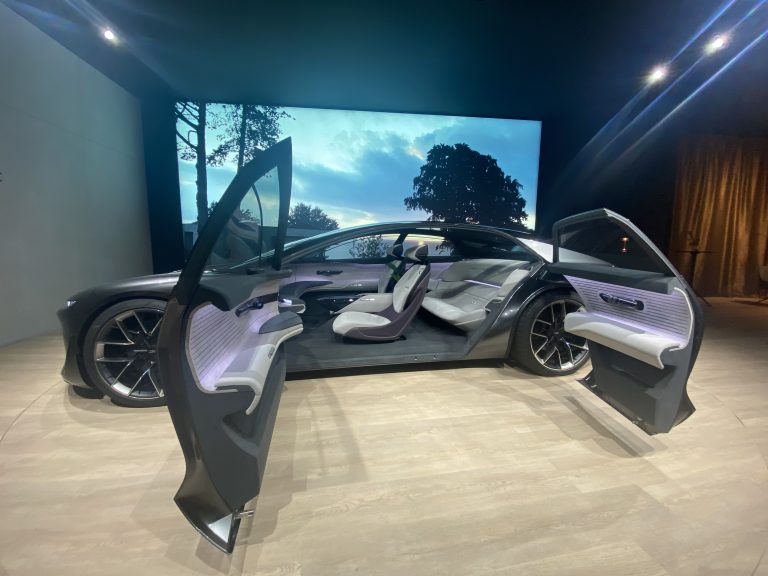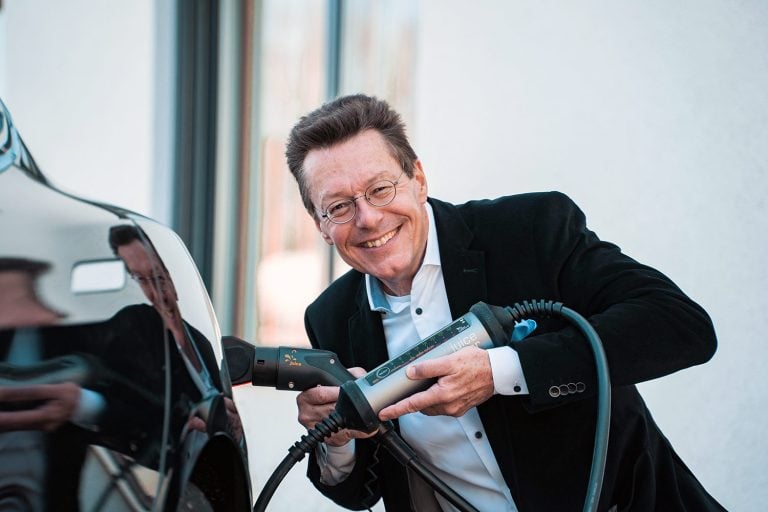Sebastian Copeland: “I’ve been watching the ice melt for 30 years!”

I first met Sebastian Copeland at the Greentech Festival in Berlin two years ago. The photographer, polar researcher, climate analyst and environmental activist, whose images focus on the beauty of nature, exhibited a selection of his works at the sustainable fair. He has dedicated his work to climate change since 2000. With his expeditions to the North Pole, Greenland and Antarctica, he documents the melting processes in this region, which have an impact on Mother Earth. Few people can convey the urgency of protecting the environment as well as he can.
Mirella Sidro: We met during Milano Designweek where you talked about circularity. When did you recognise we have to change our of way of life to save Mother Earth?
Sebastian Copeland: My work takes me to the front lines of climate change. With its melting ice, the polar regions easily display the most visible signs of transformation from climate. They also warm the fastest, from two to seven times the global average, depending on the location. I have travelled those regions, both north and south for the better past of 30 years. And have warned of the geopolitical consequences ever since.
When and why did you decide to drive an electric car?
The automotive is perhaps the easiest to transform from a huge emitter to near carbon neutrality compared to any other industry. E-mobility may not perfect for its reliance on mined source materials and challenging recycling, but it is improving with each cycle. And electric mobility is a huge forward step when it comes to the urgent need to decarbonize our societies. I have been driving electric for years now, and the barrier is quikly being lowered by technological advancement in range and reliability, and infrastructural support. Policy is also speeding up the transition away from combustion propulsion. So the future is very promising for this sector.

What do you tell the people who still have prejudices regarding to e-cars and their efficiency as well as their sustainability?
I think that e-mobility is a transition technology. There is a lot to say about the future of hydrogen in this sector. But e-cars are no way near the footprint of gas powered vehicles. It would be like comparing a violent crime with a speeding ticket. Nothing beats cycling but many people don;t have that option. And the new generation of e-cars are cheaper and cover a greater range of options than ever before. There simply is no more excuses to drive gas cars.
- Copeland, Sebastian (Author)
You’re polar explorer and climate analyst. How much did the nature change you visited the last 20 years?
Transformations are most apparent in the north. The arctic sea is shrinking with each passing year, making expedition across the northern ice cap increasingly dangerous. Every glacier is receding and by a lot. It is easy to witness as the ice leaves scars that become exposed from the melting. Besides, there are “once in a century” heat wave events now happening almost every year. In the south, things are less visible, but no less alarming. The south carries no much ice that transformations there are slower to initiate. The flip side is that the consequences are far reaching and the phenomenons labelled “unstoppable”.

What was the most disturbing experience for you regarding the climate change?
The most disturbing is that we have had all the information needed to take collective action for decades now, but we still operate outside a real sense of urgency. The science has been clear, and the media has done a decent job in at least a decade now to alert the public. Sadly, special interests, especially in the oil and gas, have done an even better job at lobbying and confusing the public with counter information propaganda campaigns that have given the illusion of a debate, just to accumulate more earnings. Because the issue is existential for them, too, they have aligned with and capitalized on a growing polarization of the political landscape. This opportunism will be looked upon poorly by history. Unfortunately, by then it will be too late. That industry has blood on their hands.

Why did you decide to become a brand ambassador of Audi?
I have been working with Audi for three years now. I was a fan of the brand before working with them, as one of our family vehicles was the Q5 for some years. With the company’s commitment to e-mobility, formalising a relationship was a no brainer for me.
As climate analyst – how do you see the future regarding climate chance? Do we still have a chance to save our Mother Earth?
There is no question that we are headed it the right direction. The problem is that as we play catch up, the scope of our global footprint is also increasing. More of the world’s populations are improving their way of life which would be a good thing if it were not for the methods used to get there which still predominantly rely on a non-circular approach. Meanwhile, our ecosystems are increasingly showing signs of imminent collapse. We have the road map, but we are still not working fast enough. It is anybody’s guess if you we get there on time to avert the worst of it. But no one can say that we were not warned.
Letzte Aktualisierung am 2024-07-26 / Affiliate Links / Bilder von der Amazon Product Advertising API






